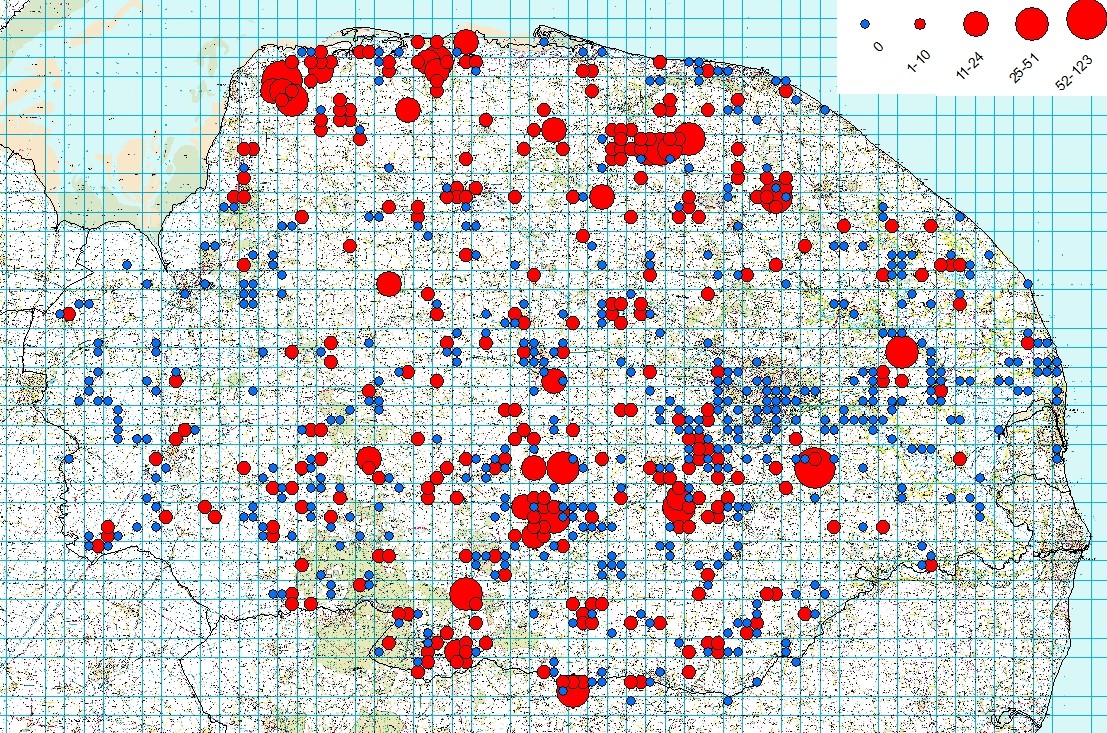Last year we grouped the three most cryptic bat species, all belonging to the family Myotis - Daubenton’s, Whiskered, Brandt’s together. We have attempted this year to split Daubenton’s from suspected Whiskered / Brandt’s, with the caveat that discrimination of these species is difficult, and is the subject of on-going work at the BTO and elsewhere. The largest proportion of Myotis recordings still remains in an unidentified Myotis category. It is likely that we will continue to push identification of these cryptic species further as our knowledge of these species improves.
In addition, some species of bats – particularly Brown long-eared bat, the Myotis bats and to some degree Barbastelle, are quite quiet in their echolocation, and can be present but undetected, if they do not fly close enough to trigger the detector. As a consequence, the number of recordings are not directly comparable between species.
Barbastelle in 2013 / 2014 - maximum number of bat passes recorded
Further reading: acoustic identification of bats
Barataud, M. (2015). Acoustic Ecology of European Bats: Species Identification, Study of their Habitats and Foraging Behaviour. Biotope.
Bas, Y., Cornut, J. & Colombo, R. (2011). Détermination visuelle des Myotis sur sonograme.
Middleton, N., Froud, A., French, K. Sowler, S. & Smith, D. (2014). Social Calls of the Bats of Britain and Ireland. Pelagic Publishing.
Russ, J. (2012). British Bat Calls: A Guide to Species Identification. Pelagic Publishing
